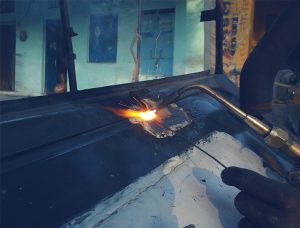How many times have you heard that in order to get a good job you must go to college? Going to college means 4 more years of studying, 4 more years of tests, and 4 more years not getting paid. On top of all that, tuition will cost you an arm and a leg.
Although we were conditioned to believe otherwise, a college degree is not the only way to be successful. There are a variety of career options that offer high paying salaries and job security without a 4-year degree. One of those career options is truck driving. The truck driving industry is facing a shortage of drivers, so there are a significant amount of jobs available. Employers are willing to pay big bucks for drivers in order to keep their fleets running. To become a trucker, you will need to attend trucking school. Lucky for you, truck driver training with Advanced Career Institute only lasts around 4-6 weeks!
Learn why trucking school is the right fit for you.
Cost of Schooling
So you’re telling me that in order for me to make money, I have to spend it…a lot of it? When attending to an instate university, you can expect to pay at least $16,000 per year in tuition and room and board. By the time you earn your degree, you will have spent around $64,000. Most times, students are required to take out loans because financial aid does not cover the entire cost of schooling. With high interest rates on these loans, students are left with crippling debt. On top of the significant debt, students are required to take a variety of courses that are unrelated to their future career.
So is there an alternative? Truck driver training can be completed in a matter of months, and costs a meager amount in comparison to college. Most trucking schools cost around $3,000-$7,000 in total. During CDL training, you will gain hands-on experience, over-the-road training and learn skills that you will use every day in your career. The best part? In a matter of months, you will start receiving a hefty paycheck, unlike in college where you have to wait 4 years just to get begin your career.
Similar Salaries
According to a
survey conducted by the National Association of Colleges and Employers, 4-year college graduates make an average salary of $50,556 per year. Similarly,
glassdoor reports that the average entry-level salary for a truck driver is around $43,000. Not only are these salaries incredibly similar, truck drivers start earning a paycheck almost 4 years sooner than college graduates. Additionally, truckers are able to keep more of their paycheck each month because they don’t have student loans to pay back. As you become a more experience driver, you will have to opportunity to earn a higher salary up to $70,000 per year.
Not Your Average 9 to 5 Job
Finally, truck driving is not your typical job. The job setting is very laid back, and there is no dress code, so you won’t have to sport a suit and tie each day to work. Similarly, you won’t be stuck behind a computer all day. You are free to travel the open road and see different parts of the country. As you drive, you can sing along to your favorite CDs, listen to podcasts, and have plenty of time to think. Lastly, most companies pay for your gas, so you won’t have to put your entire paycheck into your gas tank for the commute back and forth to work each day.
Hopefully now we have proved that you don’t have to go to a 4-year college in order to land a high paying career. Trucking school is another road to success.
Interested in truck driving school? Advanced Career Institute offers hands-on Class A CDL Training. Our campuses are located in Fresno, Visalia and Merced. To learn more about our CDL Training, check out Our Programs!






